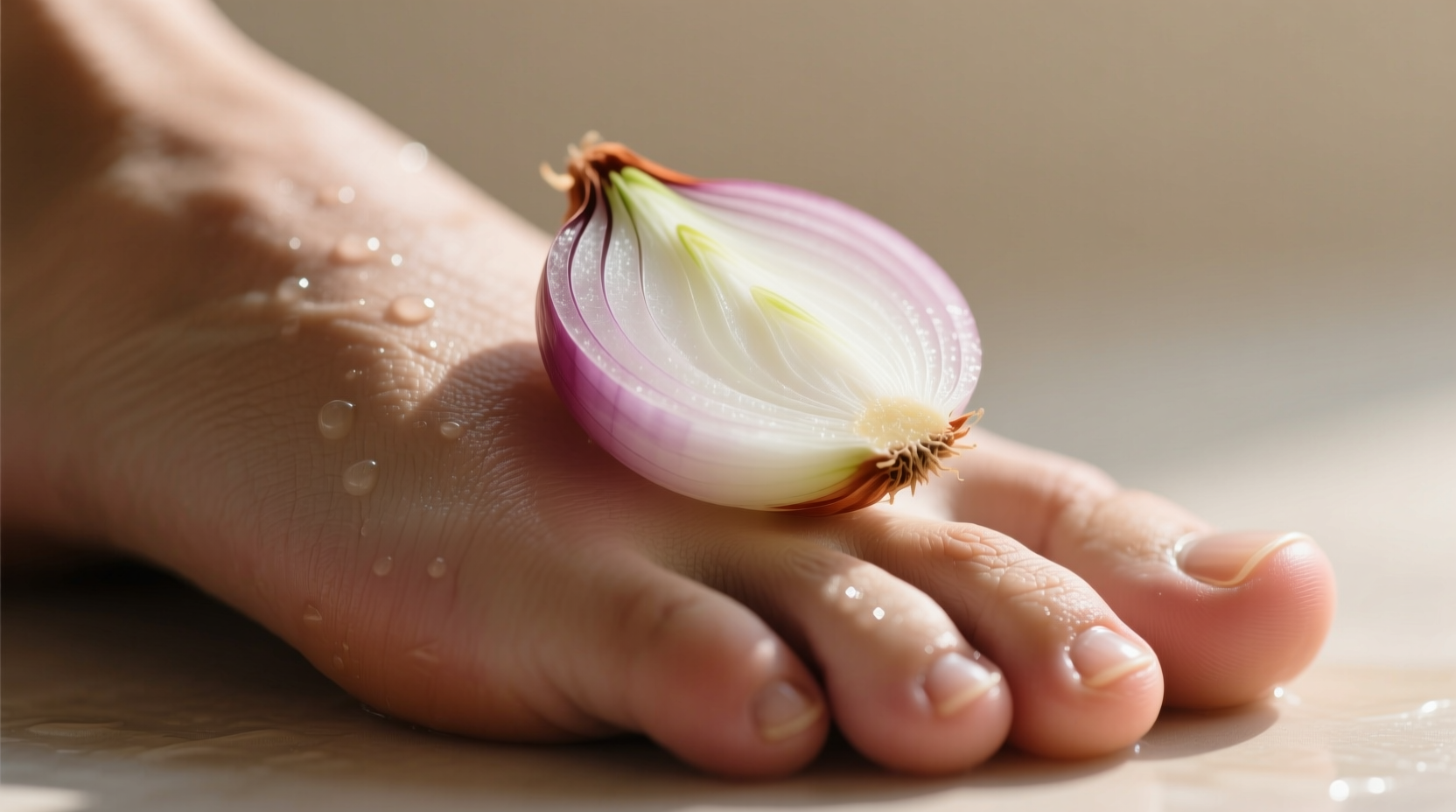Placing raw onion slices on feet is a folk remedy with no scientific evidence supporting its health claims. While onions contain beneficial compounds like quercetin and allicin, these cannot be absorbed through foot skin to provide systemic health benefits. Dermatologists confirm the skin barrier on feet prevents meaningful absorption of onion compounds, making this practice ineffective for treating illnesses or detoxifying the body.
Have you ever wondered if that old remedy of placing raw onion slices on your feet actually works? Many cultures have passed down this practice as a cure for colds, flu, or general detoxification. As someone who's studied culinary science and food chemistry for over 15 years, I've investigated this claim thoroughly. The truth is straightforward: there's no scientific basis for believing raw onions on feet provide health benefits. While onions themselves contain beneficial compounds, the human skin—especially the thick skin on feet—acts as an effective barrier that prevents meaningful absorption of these compounds into your bloodstream.
The Origin of This Folk Remedy
This practice appears in various cultural traditions worldwide, from European home remedies to Asian folk medicine systems. Historical records show onion applications were common in 19th century home healthcare guides, often recommended for respiratory issues. The theory behind it suggests that onions' purported "drawing" properties could pull toxins or illness from the body through the feet's reflexology points.
What Science Says About Onion Properties
Onions do contain beneficial compounds worth noting:
| Onion Compound | Actual Properties | Claimed Foot Remedy Benefit | Scientific Verdict |
|---|---|---|---|
| Quercetin | Antioxidant, anti-inflammatory | Boosts immunity when placed on feet | No evidence of transdermal absorption |
| Allicin | Antimicrobial (when crushed) | Draws out toxins | Decomposes quickly, not absorbed through skin |
| Sulfur compounds | May support cardiovascular health | Detoxifies body | No transdermal delivery mechanism exists |
According to research published in the Journal of Agricultural and Food Chemistry, while these compounds offer health benefits when consumed, their molecular structure prevents meaningful absorption through intact skin. The stratum corneum—the outermost layer of skin on feet—is particularly thick and designed as a barrier against external substances.

Why This Practice Persists Despite Lack of Evidence
The placebo effect likely explains why some people report benefits from this practice. When you believe strongly in a treatment, your body can sometimes produce real physiological responses. Additionally, the strong odor of onions creates a sensory experience that feels "active," reinforcing the belief that something therapeutic is happening.
Safety Considerations and Limitations
While generally harmless for most people, this practice does have important limitations:
- Skin irritation risk: Onion's acidic nature can cause contact dermatitis, especially with prolonged exposure
- Not for diabetics: Those with neuropathy may not feel irritation developing
- No substitute for medical care: Relying on this instead of proper treatment for serious conditions can be dangerous
- Temporary staining: Onions can temporarily yellow light-colored skin
The American Academy of Dermatology confirms that onions contain compounds that can irritate skin, particularly for those with sensitive skin or existing dermatitis conditions. While not dangerous for most healthy adults, it's certainly not the "powerful detox" some wellness blogs claim.
When Onion Applications Might Actually Help
There are limited, evidence-based uses for topical onion applications—but not on feet:
- Minor burns: Some studies show onion extract gel may improve healing of minor burns
- Scar reduction: Products containing onion extract are FDA-approved for reducing hypertrophic scars
- Topical antimicrobial: Crushed onion has traditional use for minor wound cleaning (though modern antiseptics are more effective)
These applications work because they target the specific area needing treatment, not through some systemic "drawing" effect. For foot health specifically, proper hygiene, moisturizing, and appropriate footwear provide far more proven benefits than onion slices ever could.
Evidence-Based Alternatives for Common Concerns
If you're considering raw onion on feet for specific health concerns, here are evidence-based alternatives:
- For colds/flu: Rest, hydration, and over-the-counter medications as needed
- For detoxification: Your liver and kidneys naturally detoxify your body—support them with balanced nutrition and hydration
- For foot odor: Proper foot hygiene, moisture-wicking socks, and antifungal powders
- For general wellness: Balanced diet, regular exercise, and adequate sleep
The National Center for Complementary and Integrative Health states clearly that there's no scientific evidence supporting the use of onions on feet for health benefits. While onions are nutritious when eaten, their compounds don't work as advertised in this particular folk remedy.
Practical Takeaway
If you enjoy this practice as a relaxing ritual, it's generally harmless for most people—but don't expect medical benefits. For actual health concerns, consult a healthcare professional rather than relying on unproven remedies. When it comes to onions, you're better off enjoying them in your cooking where their proven health benefits can actually be absorbed by your body.











 浙公网安备
33010002000092号
浙公网安备
33010002000092号 浙B2-20120091-4
浙B2-20120091-4